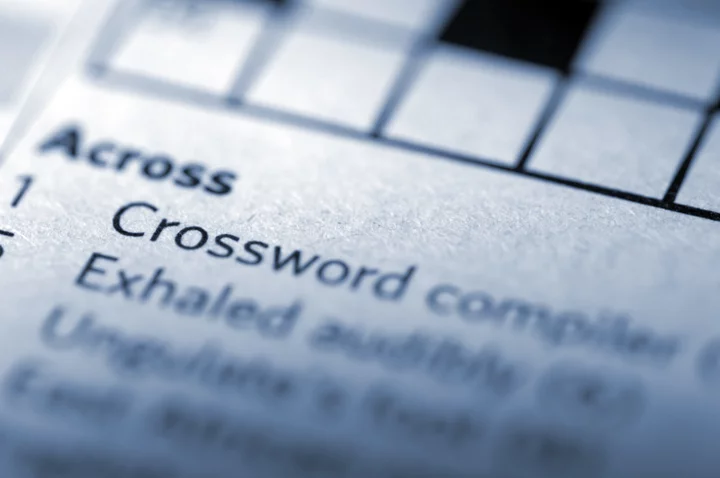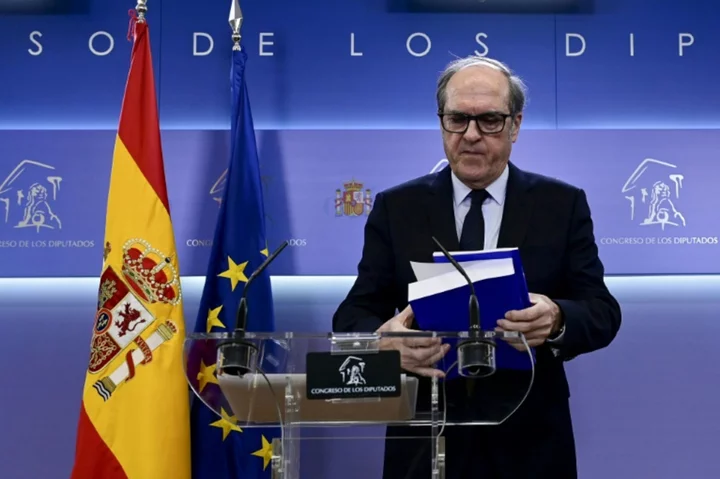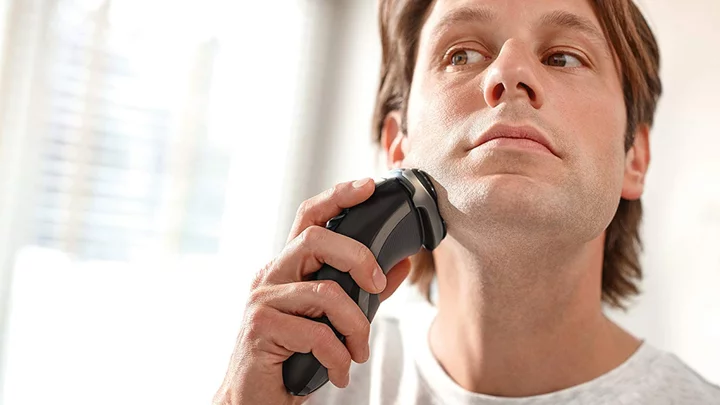The 2023 Motorola Razr ($699.99) takes much of its DNA from the company’s flagship folding phone, the Razr+ ($999.99). They share the same vibrant 6.9-inch main display, sleek design, and versatile, flipping form factor. At $300 less, the Razr is an affordable option for flip-curious buyers on a budget. However, Motorola makes some notable compromises to keep costs down, like swapping out the larger and genuinely useful external screen of the Razr+ for a limited, 1.5-inch notification panel, as well as selecting an older, slower processor. While we like the Razr for its stellar internal display, outstanding battery life, and affordable price, the Razr+ and the Samsung Galaxy Z Flip 5 ($999.99) are often available for less than their full retail price and offer more well-rounded folding experiences.
Flipping Fun
The Motorola Razr targets younger buyers looking to flip out over foldables. It's not the most powerful or feature-rich folding phone, but it's the most affordable and still offers plenty of appeal for those seeking to have fun on the flip side.
The Razr weighs 6.65 ounces and measures 3.47 by 2.91 by 0.62 inches (HWD) closed and 6.73 by 2.91 by 0.29 inches open. It's less than a millimeter thicker than the Razr+, but otherwise identical in size and shape. The Razr shuts tightly, with no room for a credit card or even a piece of paper to slip between the folds. The Razr+ and Z Flip 5 also fold tightly without a gap.
(Credit: Eric Zeman)The phone comes in Cherry Blossom, Sage Green, Summer Lilac, or Vanilla Cream and features an aluminum frame covered with a vegan leather finish on the outer surfaces. The vegan leather adds softness and grippiness to the phone that give it a premium feel. The outer 1.5-inch OLED display is covered by Gorilla Glass Victus and is small and bright enough to hide any fingerprints.
The Razr has an atypical 22:9 aspect ratio when open, which means that it's tall and narrow. I usually have a difficult time navigating tall phones, but I didn’t have too much of a problem with the Razr. It's narrow enough to get a firm grip when open and easy enough to use my other hand to open apps. I was pleasantly surprised to find that it’s no more difficult to navigate than my considerably smaller, 6.1-inch personal phone.
(Credit: Eric Zeman)Both the Razr and the Razr+ share an IP52 rating, which means they are mostly protected from dust and can handle light splashes or rain. The Z Flip 5, meanwhile, is fully water resistant thanks to an IPX8 rating and can survive quick dunks in up to one meter of water.
There is a SIM card slot on the left side of the phone, while two separate keys to control the volume as well as a combined power button/fingerprint sensor are housed on the right edge. The buttons feel solid and offer a loud and satisfying click when pressed. The fingerprint sensor is a bit too flush with the frame, which can make it difficult to find by feel. The sensor worked well when I was able to put my finger in the correct spot, but its awkward placement meant that I often found myself opting to type in a passcode instead.
(Credit: Eric Zeman)The Razr’s hinge is the same one found on the Razr+ and is a true delight. Motorola says it is rated to 400,000 folds, which means it should last the lifetime of the phone. You can position it anywhere between 45 and 130 degrees, which is great for taking selfies or hosting video chats. I enjoyed holding the phone in camera mode at 90 degrees, which placed the view of the camera on the top half of the screen and the camera controls on the bottom half. This was perfect for my small hands, as I could easily adjust the settings and snap my picture without having to reach all over the screen.
(Credit: Eric Zeman)The 6.9-inch internal display matches its Razr+ counterpart with 2,640 by 1,080 pixels, for a density of 413ppi. The refresh rate on the Razr caps out at 144Hz, which is lower than the 165Hz display on the Razr+, but higher than the 90Hz to 120Hz screens found on many phones at this price. The pOLED display puts out 1,400 nits of brightness (peak). Pictures and video look great, and the screen is vibrant even in direct sunlight. Scrolling through web pages is smooth, and the crease in the screen, while visible from off angles, mostly disappears when the phone is positioned directly in front of you. It’s still slightly noticeable, but I eventually got used to it.
An Underwhelming Outer Display
The large and appealing external display of the Razr+ has been reduced to a thin, 1.5-inch notification strip at the base of the Razr's face. It reveals the battery percentage, the date, and the time—and that’s about it. The Razr+'s outer display offers nearly full-fledged apps and allows you to keep the phone closed much of the time while sending messages and checking your email.
You can swipe up on the Razr's display for notifications or swipe down for quick settings like airplane mode and Wi-Fi. You’re able to read text messages on the display, but it will ask you to open the phone to respond—even if you’re just trying to use one of the preprogrammed responses.
(Credit: Eric Zeman)Like most Motorola phones, you can open up the camera with the phone closed by twisting your wrist twice. This will convert the front display into a tiny viewfinder for taking selfies. Tapping the screen or pressing the volume down button will initiate a three-second countdown before taking a picture. This is about the most useful aspect of the external display, and it actually makes taking selfies easy and fun.
Otherwise, the front display isn’t that far removed from the original external screen found on Razr phones from the early 2000s. It shows the same limited information we got 20 years ago with only incremental modern improvements. You’ll need to step up to the Razr+ or move over to the Z Flip 5 to get 2023-worthy advancements on the outer display.
Efficient Everyday Performance
The Razr relies on the Snapdragon 7 Gen 1 chipset, which is less powerful than the Snapdragon 8+ Gen 1 found in the Razr+ and much less powerful than the Snapdragon 8 Gen 2 of the Z Flip 5. While the 7 Gen 1 is not the current, top-of-the-line chip, it still offers decent power for everyday tasks. The Razr and Razr+ both come with 8GB of RAM, but the Razr tops out at 128GB of internal storage while the Razr+ is available with up to 256GB. Neither Razr offers expandable storage.
(Credit: Geekbench, GFXBench, Basemark)The Razr was responsive in testing. It ran multiple apps with ease and loaded most apps in a blink. Running benchmarks showed middling performance, however. On Geekbench 6, which puts the CPU to work, the Razr earned 1,053 on the single-core test and 2,997 on the multi-core test. This is a step down from the Razr+, which scored 1,297 and 3,842 on the same test. However, it is a vast improvement over the Razr 5G’s pitiful showing of 616 and 1,903. The Z Flip 5 outperformed all of them with scores of 1,940 and 4,895.
The Razr managed 21fps on the Aztec Ruins test on the GFXBench testing suite, and increased to 40fps during the Manhattan 3.1 test. The phone topped out at 92fps on the T-Rex test. These marks are well below competing slab-style phone competitors, such as the Google Pixel 8 ($699.99), which ran over twice as fast at 49fps.
Needless to say, gaming performance isn’t great on the Razr. Genshin Impact was responsive as long as my character was walking in a straight line. Swinging my sword caused frames to drop, while battles lagged and froze. The phone got warm—but never hot—while I played, even if I didn’t play for long. The Razr did a much better job handling Alto’s Odyssey. The game ran smoothly and the phone didn’t heat up at all.
(Credit: Eric Zeman)Motorola packs the Razr with a 4,200mAh battery, which is noticeably bigger than the 3,800mAh cell in in the Razr+. The phone can fit a bigger battery because it doesn’t have that fancy external display, according to Motorola. The Razr supports 30W wired charging along with 5W wireless charging. There is a UCB-C port at the bottom of the phone for plugging into a charging brick (which you need to supply). It charged in 73 minutes when we connected it to a 63W charger.
The phone performed admirably on our battery test, in which we stream an HD video over Wi-Fi at full brightness. It lasted 15 hours and 48 minutes, or approximately 1 hour and 45 minutes longer than the Razr+. The Razr notched a big win over the Z Flip 5, which only managed 10 hours and 5 minutes with its 3,700mAh battery.
Capable Calls and Connections
My location in southern Maine doesn't get great cellular service from any of the three major networks. Even so, the Razr supports sub-6GHz 5G (but not mmWave 5G) and maxed out at 84.9Mbps down and 22.4 Mbps up on T-Mobile in my neighborhood. By comparison, the iPhone 14 Pro notched a download speed of 125Mbps and an upload speed of 25.3Mbps from the same spot. The iPhone supports mmWave 5G and is better at snagging high-speed performance in supported areas.
Motorola Razr+ and Razr (Credit: Eric Zeman)The Razr comes unlocked directly from Motorola and can be used on a variety of mobile carriers, including AT&T, T-Mobile, and Verizon. It will also work on a variety of low-cost carriers and MVNOs such as Boost Mobile, Google Fi, and UScellular, among others. The phone isn't compatible with Republic Wireless.
The Razr supports Wi-Fi 6E connectivity and, when connected to a Wi-Fi 6 testing point, hit download speeds of 150Mbps and upload speeds of 50.8Mbps. Conversely, an Apple iPhone 14 Pro tested in the same spot reached download speeds of 411Mbps and upload speeds of 20.6Mbps. When I took the Razr to the far side of my house, it reached 97.9Mbps down and 60.9Mbps up, while the iPhone 14 Pro couldn’t even run the speed test app in that same spot.
The phone plays audio from two speakers, one top and one bottom. Testing them via the track "Don’t Fear the Reaper" by Blue Oyster Cult led to a peak volume of 99dB. The highs are clear and loud with the volume at max settings, but the bass is sorely lacking. If you want to get the best sound, you’re better off putting on some headphones. The phone lacks a 3.5mm audio jack and doesn't include a USB-C-to-3.5mm adapter in the box. But it does have Bluetooth 5.3 for wireless audio and I had no problems connecting multiple Bluetooth devices.
Call quality is loud and sharp, especially if you're in a quiet room. I found it tricky to properly line up the earpiece speaker with my ear, as it's located all the way at the tippy top of the phone. The earpiece topped out at 79.1dB on a voice call, while the down-facing bottom speaker got up to 89.3dB on speakerphone. These are average ratings.
The Razr also supports NFC for tap-and-go mobile payments.
Average Cameras
The Razr features two rear cameras and one front-facing camera tucked into a punch hole in the main display. The outer camera lenses lie flush with the front display, which helps to give the front of the phone a smooth feel when closed. Like most folding phones, the Razr sacrifices camera quality a bit.
You'll find a 64MP primary shooter with an aperture of f/1.7 and a 13MP ultra-wide camera with a f/2.2 aperture and a 120-degree field of view on the outside. The main camera includes optical image stabilization (OIS) and bins photos down by a factor of four for 16MP final images. Both the main and wide-angle cameras can capture 4K30 and 1080p60 video. Like the main camera, the phone’s 32MP front-facing camera supports OIS and bins images down by four to 8MP shots. It has an aperture of f/2.4 and can also capture 4K30 and 1080p60 video.
(Credit: Sarah Lord)Outdoor photos look great. In the image above, the contrast between the sky and grass is natural, while the colors on the flags pop in an appealing way. Indoor photos aren't nearly as good and tend to be slightly oversaturated. Portrait mode photos do a good job of blurring the background when needed, though it was sometimes hard to tell while taking the shot. Selfies are decent on the inner camera, but there’s little incentive to use it when the foldable design makes it so easy to use the rear camera for everything.
(Credit: Sarah Lord)Low-light pictures don’t fare as well, as evidenced below. Much of the detail is lost and images look as though they could have been painted on an oil canvas. The same photo taken on an iPhone 14 Pro is crisp and reveals more detail than I could see with the naked eye. The discrepancy in picture quality isn’t all that surprising. If photography is important to you, you're likely better off getting a slab phone, such as the similarly priced Pixel 8.
(Credit: Sarah Lord)Video clips captured with the Motorola Razr are merely OK. The Razr+ and Z Flip 5 aren't much better. If you really want top-notch video from a phone, you'll be best served by an iPhone or a Pixel.
Motorola's Software Spin
The Razr ships with Android 13 and comes with three years of Android updates and four years of security updates. This falls behind many of Motorola’s competitors, with Samsung offering four years of OS updates and five years of security updates and Google promising seven years of both OS and software updates to the Pixel 8 and 8 Pro.
The Razr comes with some special features that are specific to Motorola devices. These include the Ready For set of functions that allow you to connect your phone to an external display or a Windows PC so you can use it as a webcam or work on Android apps on your computer. The UI presents itself as a basic Windows-like screen with small app icons and moveable, resizable app windows.
(Credit: Eric Zeman)Motorola also includes some useful special gestures. For example, you can tap three fingers on the display to take a screenshot, flick your wrist twice to turn on the camera, or slash your arm diagonally to turn on the flashlight. I usually have a hard time remembering special gestures, but some of these are so memorable that they’ve stuck with me. I’m generally afraid of the dark and it's easy for me to remember that a knife-slashing gesture will turn on my flashlight—to hopefully protect me from any real slashers out there. All three gestures work reliably.
A Price to Flip Over
The Motorola Razr is all about the design and made for people who want to try something new without spending a ton of money. It offers reasonably good performance, but the focus here is really on the premium look and feel and fun colors that stand out. If you want a more powerful or feature-rich folding phone, you need to step up to the costlier Razr+ or Galaxy Z Flip 5 for $300 more. And ultimately, the best option for flip phone fanatics is to find a discounted Razr+ or Z Flip 5. But if budget is one of your primary buying considerations and you’re looking to dip your toes into the swelling pool of foldables, the 2023 Razr is a good place to start.









